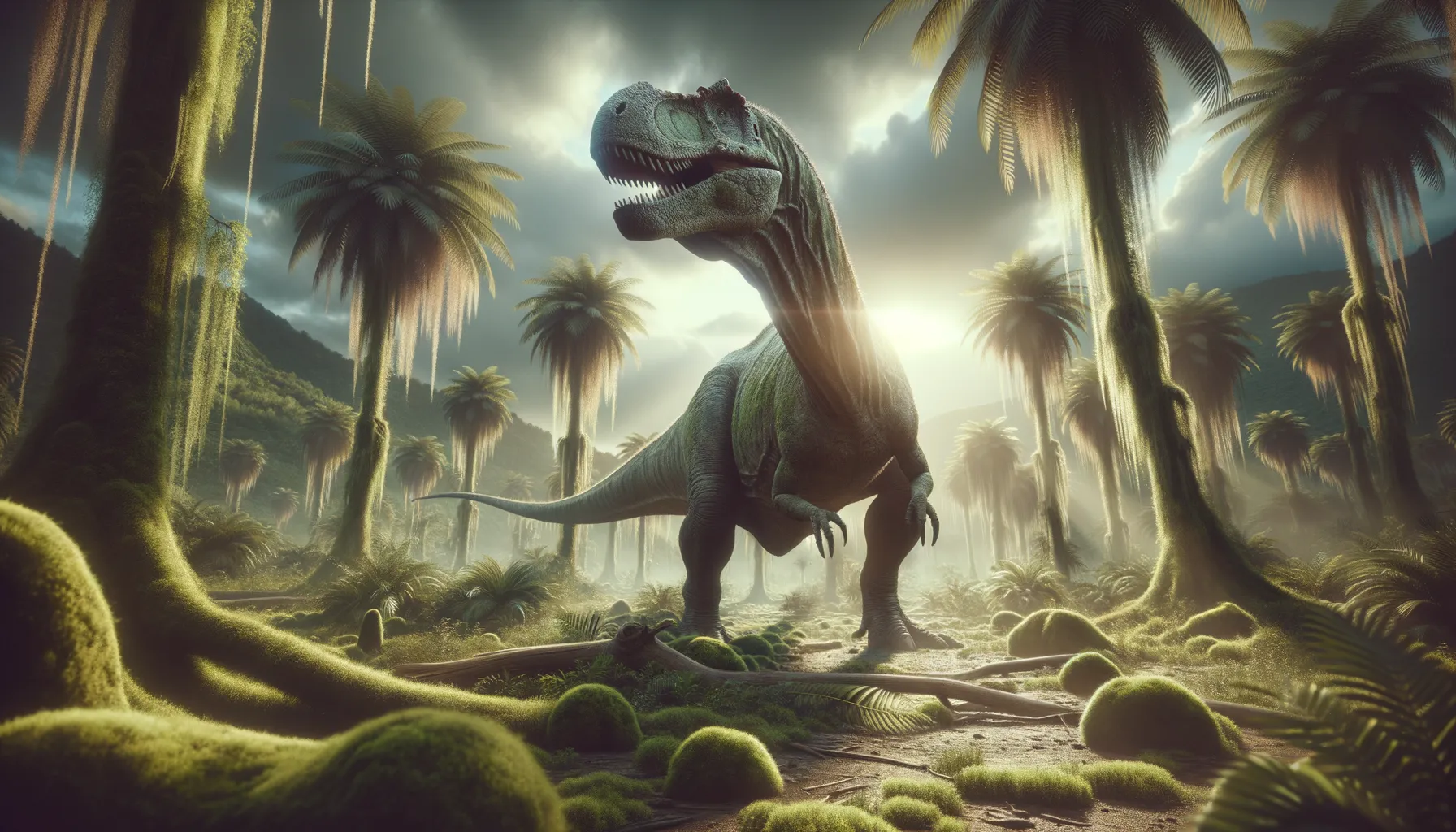
Isanosaurus
The Triassic giant's humble beginnings.
Period
Triassic
Length
Roughly 20 feet long.
Height
About 10 feet tall at the shoulder.
Weight
Approximately 5 tons.
Isanosaurus is one of the earliest known sauropods, giving insight into the evolutionary transition of these gigantic dinosaurs. This prehistoric herbivore roamed the Earth during the Late Triassic period, over 200 million years ago. Known from fossil remains found in Thailand, Isanosaurus is essential for understanding the early evolution of sauropod dinosaurs, showcasing primitive features associated with later, larger species.
Diet
Isanosaurus was herbivorous, feeding on a variety of plants available during its time. Its diet likely consisted of ferns, cycads, and other prehistoric vegetation.
Hunting
As a herbivore, Isanosaurus did not hunt but foraged for plant material. It would have used its long neck to reach vegetation high above the ground or at low levels.
Environmental challenges
During the Late Triassic period, Isanosaurus faced environmental challenges such as fluctuating climates and competition for food. Vegetation would have been affected by changing weather patterns, impacting food availability. Additionally, larger predators posed a threat to juvenile sauropods, requiring them to be cautious and remain close to protective herds.
Speed
Slow-moving due to its large size.
Lifespan
Estimated between 20 to 30 years.
First discovery
Discovered in Thailand in the 1990s.
Fun Facts
- Isanosaurus lived around 210 million years ago during the late Triassic period, making it one of the earliest known sauropod dinosaurs.
- This dinosaur was discovered in Thailand, and its name means 'Lizard of Isan,' referring to the region where it was found.
- Isanosaurus was a long-necked dinosaur, similar in appearance to later sauropods like Brachiosaurus, though it was much smaller.
- Scientists believe Isanosaurus was an herbivore, meaning it primarily fed on plants, which was common for sauropods.
- The discovery of Isanosaurus helped paleontologists understand the early evolution and spread of sauropods across the world.
- Even though Isanosaurus was smaller than later sauropods, it could still have reached lengths of about 18 feet (around 5.5 meters).
- Fossils of Isanosaurus are quite rare, making every discovery important for studying the early history of sauropod dinosaurs.
Growth and Development
Isanosaurus likely exhibited rapid growth in its early years, a common trait among sauropods to attain a size that minimized predation risk. Juvenile sauropods might have had different dietary needs than adults. As they matured, growth rates would have slowed, culminating in the massive sizes observed in the fossil record.
Habitat
Isanosaurus inhabited a region that is now modern-day Thailand, which during the Triassic was a lush and verdant area. This environment provided abundant plant material to sustain its herbivorous diet. Accessible water sources were also crucial for the survival of such large creatures.
Interaction with other species
As a relatively early sauropod, Isanosaurus would have encountered a variety of other Triassic species. Its size offered some protection but also required navigating cohabitation with carnivorous counterparts. Symbiotic relationships with smaller herbivores could have played a role in resource sharing.
Natural lifespan
Isanosaurus likely lived for up to 30 years under natural conditions.
Reproduction
Like many dinosaurs, Isanosaurus likely reproduced by laying eggs. Nesting sites would have needed to provide considerable protection from predators. Parental care is uncertain, but it is possible they exhibited some degree of nest defense until offspring reached a survivable age.
Social behaviour
Isanosaurus may have lived in small herds, a behavior that provided safety in numbers. Social structures within these herds could have been simple, with leaders based on size and experience. Herds offered protection against predators, enabling them to forage collectively.
Fossil locations
Fossils of Isanosaurus have been found primarily in Thailand. These fossils provide crucial evidence about the distribution and lifestyle of early sauropods. The specific geological formations where these remains are discovered give insights into the Triassic ecosystem of the region.
